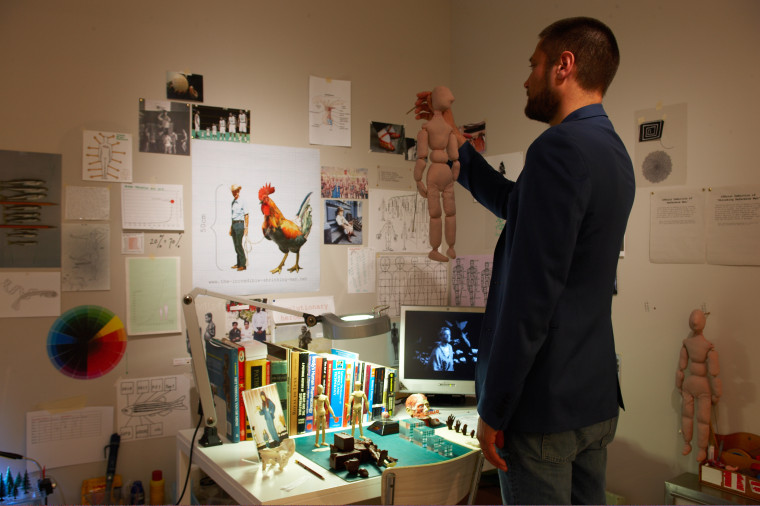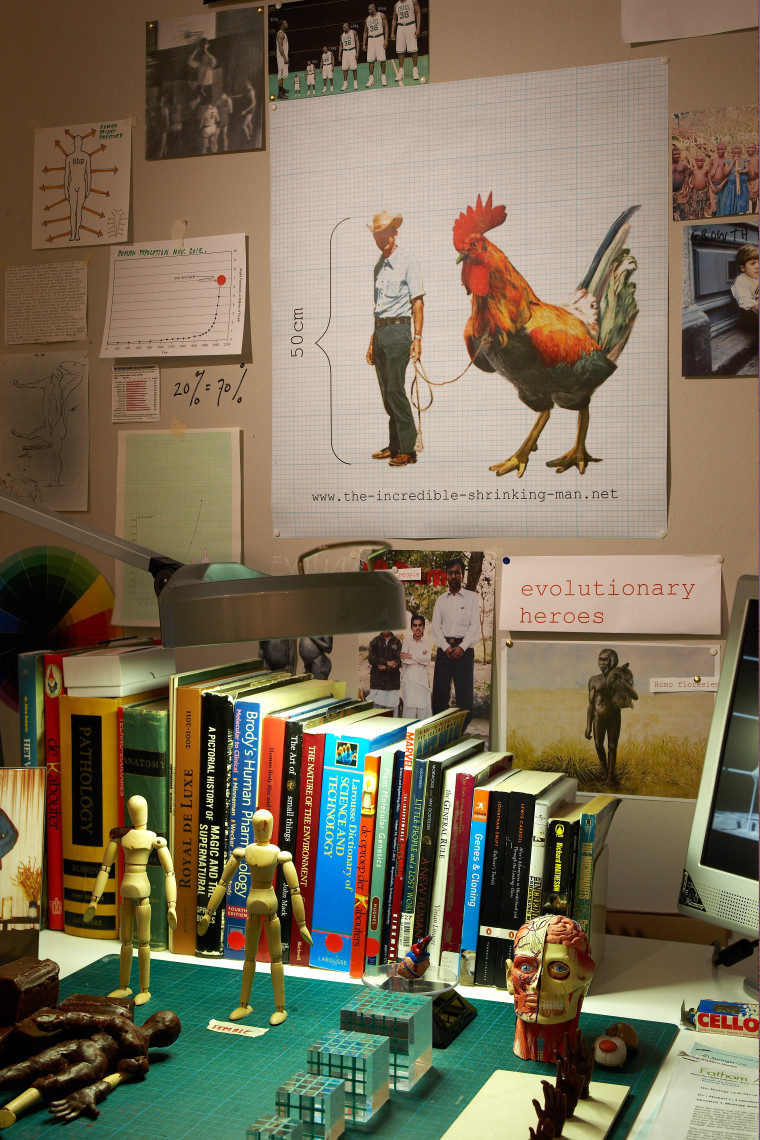To re-design humans
The Incredible Shrinking Man

Arne Hendriks
‘The Incredible Shrinking Man’ is a speculative research project about the consequences of downsizing the human species to better fit the Earth. It is a long-established trend for people to grow taller. As a direct result we need more resources, more food, more energy and more space. A 10% increase in body height represents a 33% increase in weight and a considerable increase in material needs. What if we tried to turn this trend towards ever-increasing size around? If the 20th century was all about growth, perhaps the 21st century is about downsizing. We could literally shrink ourselves back into a world of abundant resources. From an evolutionary perspective, being taller at some point undoubtedly represented an advantage. In this day and age, however, it’s a burden, on ourselves and on the planet.

At 50cm we’d only need about 2% to 5% of what we need now, one chicken could feed 100 people and we’d already have all the sustainable energy we need.
That’s why ‘The Incredible Shrinking Man’ proposes to shrink the human species to a height of 50cm. At 50cm we’d only need about 2% to 5% of what we need now, one chicken could feed 100 people and we’d already have all the sustainable energy we need. Although it seems an extreme goal, evolutionary experiments are already on their way. In remote areas, like the Sindh valley in Pakistan, the Congo jungle and the island of Flores in Indonesia, evolutionary experiments with a smaller human species are underway. The unlikely heroes of this growth resistance are the people with Laron syndrome, Homo floresiensis, the Rampasasa, and primordial dwarfs. Within their genes we find pieces of the genetic puzzle towards a more balanced, much shorter mankind. And perhaps 50cm is not that extreme at all: today’s shortest person Chandra Bahadur Dangi from Nepal is an almost perfect 54cm tall.


